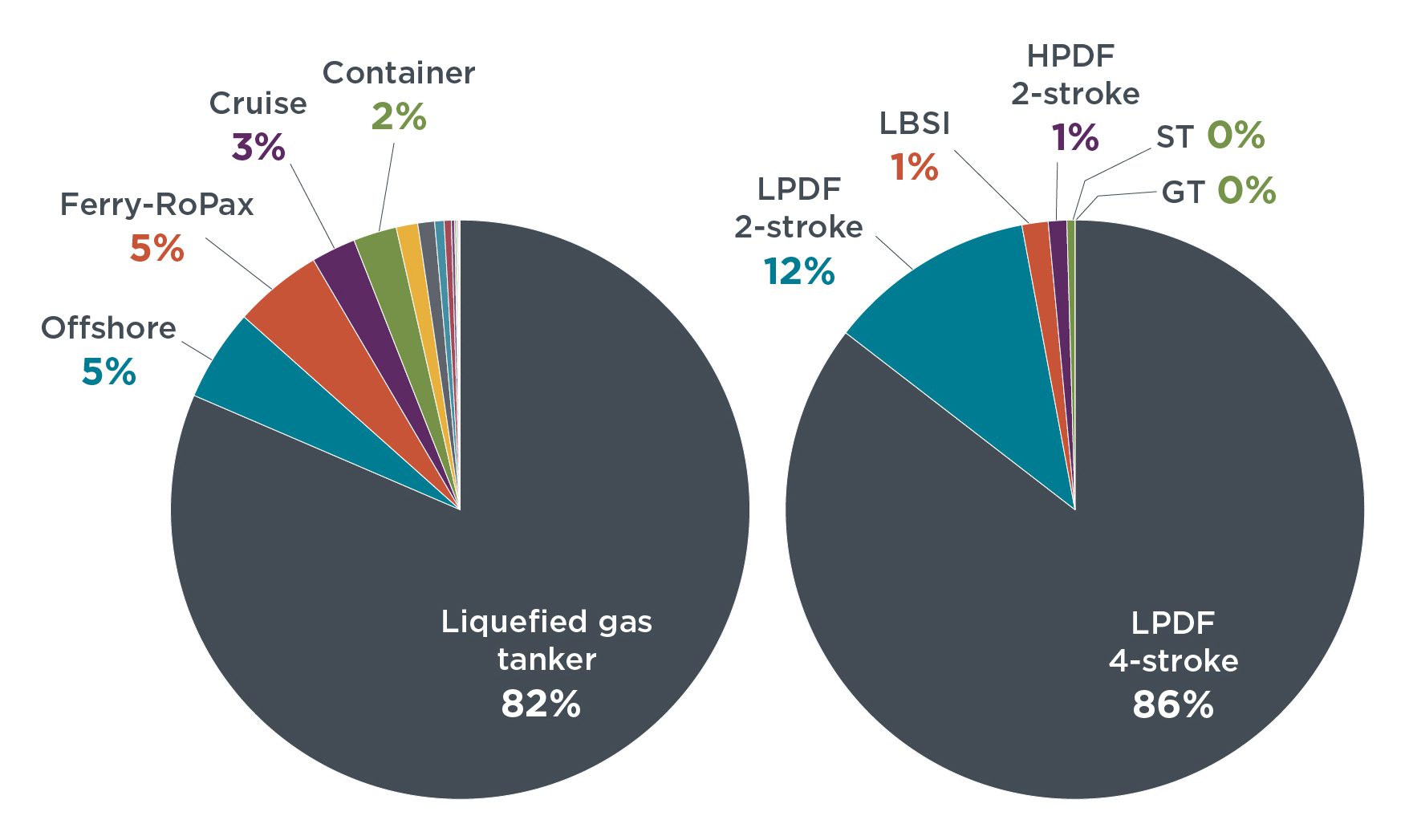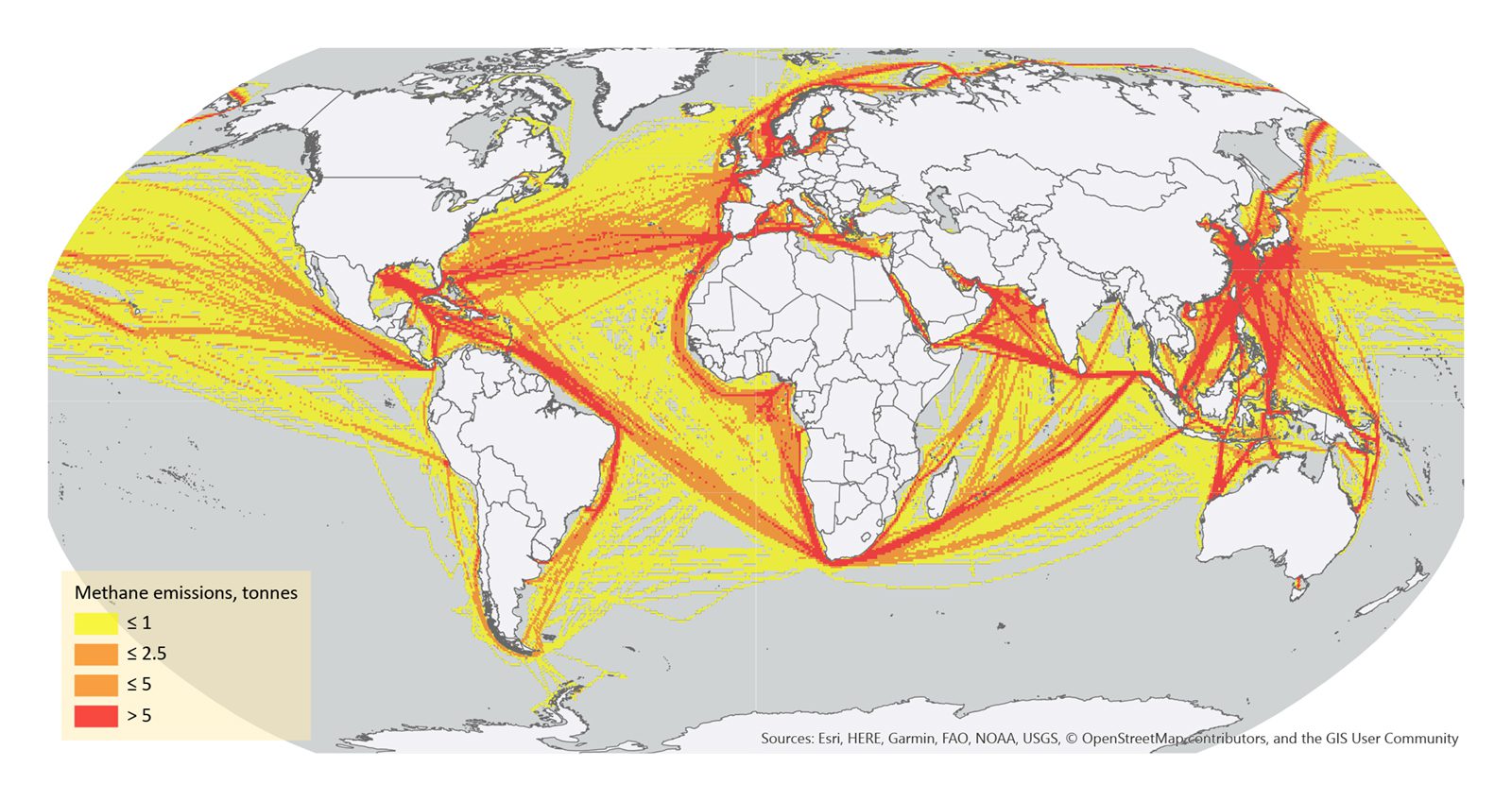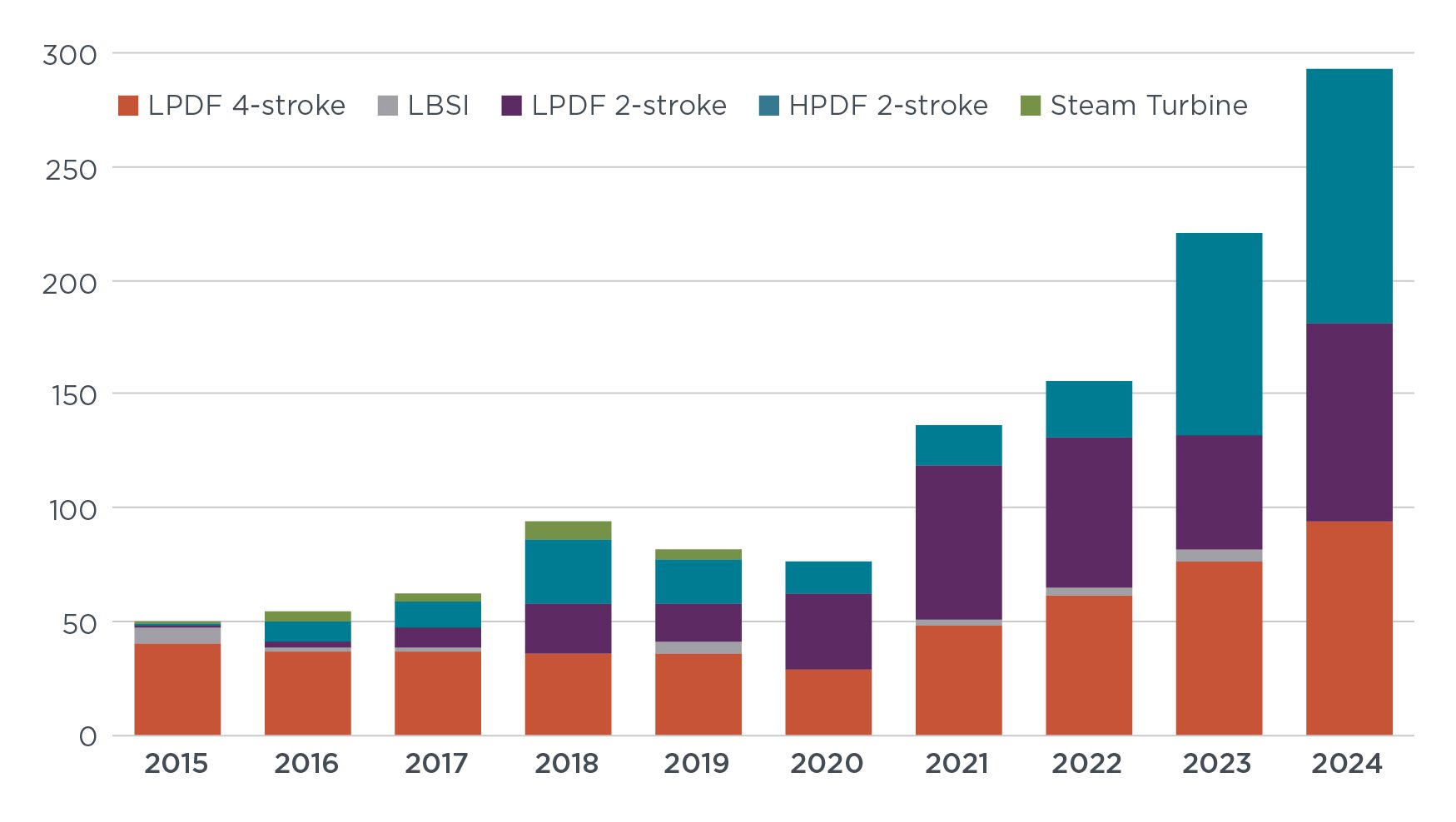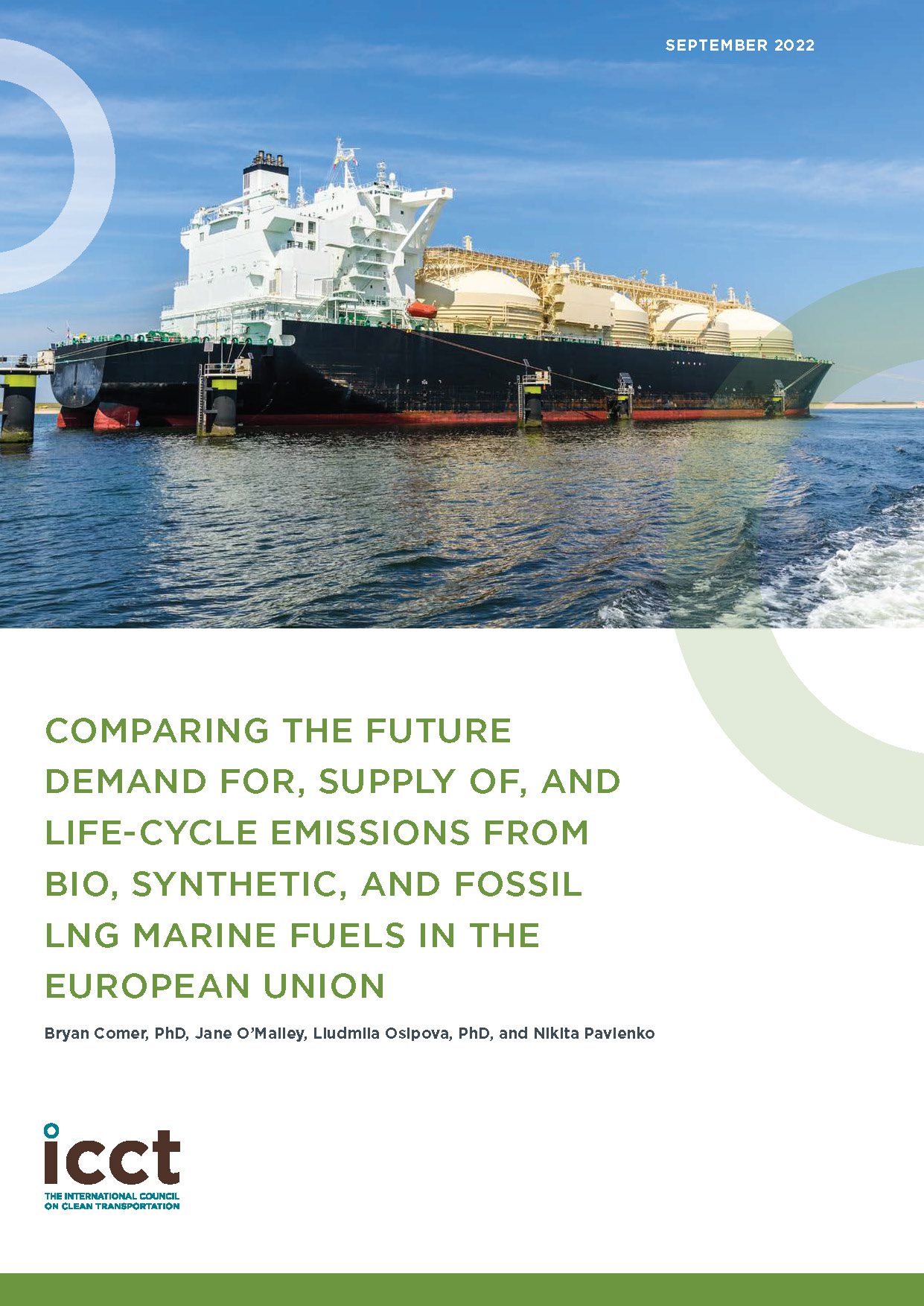IMO’s newly revised GHG strategy: What it means for shipping and the Paris Agreement
Blog
Without more action, LNG could pull international shipping off its decarbonization course
LNG is primarily methane, a powerful GHG that leaks throughout the production and combustion processes—including unburned methane that escapes from marine engines, known as methane slip. As a result, a new ship that’s built to sail on LNG instead of conventional fuels can emit more GHGs on a life-cycle basis, depending on the engine technology and how the LNG is produced.
Figure 1 depicts methane emissions from international shipping in 2021 by ship type and engine type, estimated using ICCT’s Systematic Assessment of Vessel Emissions (SAVE) model (2021 is the most recent year for which we have such data). Liquefied gas tankers, mostly LNG carriers, were the source of 82% of the emissions and were followed by offshore vessels, RoPax ferries, cruise ships, and container ships. Accordingly, the map of methane emissions from LNG-fueled ships in Figure 2 shows they are highly concentrated along LNG trade routes.


Figure 2. Methane emissions from LNG-fueled ships in 2021, aggregated at 0.5 * 0.5 degrees. Sources: Spire (AIS data) and S&P Global (ship characteristics data). This map is without prejudice to the status of or sovereignty over any territory, to the delimitation of international frontiers and boundaries and to the name of any territory, city, or area.
Installations of high-methane-slip LPDF 4-stroke engines are on the rise (Figure 3). More than half of cruise ship capacity by gross tonnage to be built between 2023 and 2025 will run on LNG using these engines, according to IHS Markit (nka S&P Global) data as of July 2023 (the latest available). While a small share of all ships globally, cruise ships have disproportionately high per-ship average emissions because of their hotel and leisure facilities and leaky engines. About the only slightly bright spot here is that the relative share of LPDF 4-stroke engines among engine types in LNG-fueled ships is declining amid growing use of medium-methane-slip LPDF 2-stroke engines that are increasingly used in gas tankers and the low-methane-slip HPDF 2-stroke engines found in most new LNG-fueled container ships and vehicle carriers.

Keep in mind, also, that the real-world methane emissions from ships may be higher than is currently understood. Existing emission inventories, including ours, rely on methane emission factors derived from limited on-board or laboratory measurements of engines. ICCT is leading a project called Fugitive and Unburned Methane Emissions from Ships (FUMES) to estimate real-world methane emissions from LNG-fueled ships using drones, helicopters, and in-stack sensors. Studies like this will more accurately measure methane slip and, if reflected in policies, will help account for and control the climate impacts of LNG-fueled ships. Watch out for that study later this month.
Given that ships can remain in service for decades—the average ship is now more than 22 years old—many of the ships built today will probably still be in the fleet in 2050, when the IMO aims to achieve net-zero emissions. This makes regulations on them crucial, and starting in 2026, the European Union (EU)’s Emissions Trading System (ETS) will cover methane emissions from ships entering or departing EU ports. A separate regulation, FuelEU maritime, will require ships to reduce the life-cycle GHG intensity of on-board energy use starting in 2025. With the FuelEU maritime regulation in effect, ships could only use LPDF 4-stroke engines with 100% fossil LNG if they also use credits from overperforming ships in their fleet or buy credits from other ships; absent that, they will have to use a mix of fossil LNG and qualifying bio- or synthetic fuels. This is because the European Union included methane slip and upstream well-to-tank emissions in the regulations.
The IMO and other multilateral and national authorities could not only follow the EU example but consider more ambitious targets than the European Union has set thus far. IMO delegates are currently developing a GHG Fuel Standard (GFS) to regulate the life-cycle GHG intensity of marine fuels that’s similar to the FuelEU maritime regulation. The earliest the GFS could enter into force is 2027, and if it is to spur emissions reductions that would achieve IMO’s 2050 goal, the GFS will have to break from historical patterns of lagging behind the European Union and be more stringent from the start. After all, the EU regulation aims for 80% reduction in the GHG intensity, not 100%, by 2050. In the meantime, regions or countries could set more ambitious regulations that target methane pollution in their waters. For the more than 150 countries that have signed on to the Global Methane Pledge, reducing methane emissions from ships that call on their ports or sail in their waters would help to achieve the goal of reducing global methane emissions by 30% between 2020 and 2030.
And to be clear, alternatives to LNG are out there. Methanol avoids the methane slip problem and is liquid at room temperature. Other options expected to be available in the longer term include hydrogen fuel cells or batteries. For LNG carriers that continue to use LNG as their fuel, low-methane-slip HPDF engines are a better choice for the environment than the LPDF engines that have long dominated the class. Regulations like a strict GFS that could support the adoption of fuels with lower life-cycle GHG emissions.
In a blog post we’ll publish in a couple of days, my colleagues use our new Polaris model to estimate the life-cycle GHG intensity reductions that would be needed until 2050 to align with IMO goals or with the Paris Agreement. And at the same time, multilateral and national regulators can be ambitious in their own efforts to limit GHG emissions, including methane, from marine fuel.
Author
Related Publications
Estimates demand for liquefied natural gas (LNG) fuel for ships trading with the European Union in 2030 and compares the life-cycle greenhouse gas emissions of using fossil or renewable LNG to consider renewable LNG’s potential to support climate goals.


